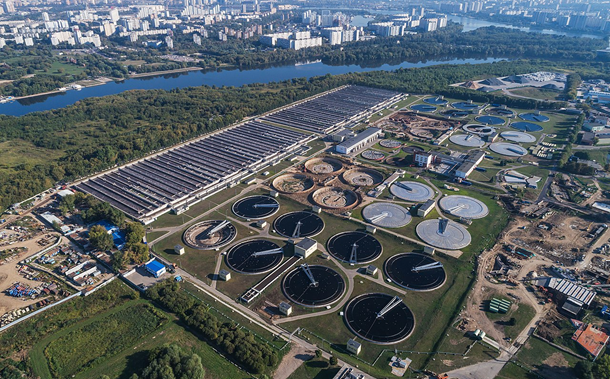Predicting Soil Electrical Resistivity Using Geotechnical Properties and Artificial Neural Networks
Downloads
This study investigates the influence of key geotechnical parameters—water content, dry density, and plasticity index—on soil electrical resistivity, with the goal of improving prediction accuracy for substation grounding system design. A dataset comprising 150 laboratory test results was compiled from soil samples collected at three substations in Thailand, representing diverse moisture conditions to reflect field variability. Two modeling approaches were applied: multiple regression (MR) and artificial neural networks (ANN), evaluated using the coefficient of determination (R²) and root mean square error (RMSE). The MR models achieved relatively strong correlations, with R² values up to 0.8281; however, their higher RMSE values indicated limited precision under variable conditions. In contrast, the ANN models, particularly those incorporating the plasticity index, demonstrated superior performance, achieving lower RMSE values—down to 0.057—highlighting their ability to capture complex nonlinear relationships. In comparison to prior studies that often relied on single-variable models or uniform soil datasets, this research adopts a more integrative and generalizable framework. By incorporating multiple soil parameters into the ANN model and validating against a diverse dataset, the study offers practical insights for engineering applications. The findings are particularly valuable in tropical regions where soil moisture variation significantly impacts resistivity and grounding system performance.
Downloads
[1] Ackerman, A., Sen, P. K., & Oertli, C. (2013). Designing safe and reliable grounding in AC substations with poor soil resistivity: An interpretation of IEEE Std. 80. IEEE Transactions on Industry Applications, 49(4), 1883–1889. doi:10.1109/TIA.2013.2256092.
[2] Amadi, H. (2017). Soil Resistivity Investigations for Substation Grounding Systems in Wetland Regions: a Case Study of Lagos State, Nigeria. Asian Journal of Natural and Applied Sciences, 6(3), 90–99.
[3] IEEE. (2015). 80-2013 - IEEE Guide for Safety in AC Substation Grounding. doi:10.1109/ieeestd.2015.7109078.
[4] Tao, Y., Wei, J., Li, Q., Shi, Y., Zhang, T., Zhang, J., & Liu, X. (2018). The effect of a large backfill area on grounding grid performance. Energies, 11(4), 698. doi:10.3390/en11040698.
[5] Kizhlo, M., & Kanbergs, A. (2009). Research of the parameter changes of the grounding system. 2009 World Non-Grid-Connected Wind Power and Energy Conference, 5335821. doi:10.1109/wnwec.2009.5335821.
[6] Malanda, S. C., Davidson, I. E., Singh, E., & Buraimoh, E. (2018). Analysis of Soil Resistivity and its Impact on Grounding Systems Design. 2018 IEEE PES/IAS PowerAfrica, 324–329. doi:10.1109/powerafrica.2018.8520960.
[7] Adegboyega, G. A., & Odeyemi, K. O. (2011). Assessment of soil resistivity on grounding of electrical systems: A case study of North-East Zone, Nigeria. Journal of Academic and Applied Studies, 1(3), 28-38.
[8] Bienibuor, A. K., Preko, K., Aning, A. A., Menyeh, A., Wemegah, D. D., Appiah, M. K., & Gyilbag, A. (2025). Application of the electrical resistivity tomography (ERT) method in identifying high groundwater potential sites in the Atebubu municipality of Ghana. Discover Geoscience, 3(1), 14. doi:10.1007/s44288-025-00120-x.
[9] Musty, S. B., & Bery, A. A. (2024). Application of Electrical Resistivity Tomography and Induced Polarization for Pre-Construction Site Assessment in Ipoh, Perak, Malaysia. BIO Web of Conferences, 131, 04014. doi:10.1051/bioconf/202413104014.
[10] Putra, M. S. G. P., Salleh, S. N., & Anggraini, N. (2024). Correlation of CPT, SPT, and ERT data for a better understanding of soils condition: A case study in SPG Merbau, South Sumatra. IOP Conference Series: Earth and Environmental Science, 1416(1), 12008. doi:10.1088/1755-1315/1416/1/012008.
[11] Thapa, S., Asha Rani, N. R., & Sharma, R. P. (2025). Prediction of compressive strength, static modulus and wenner resistivity for normal concrete using different percentages of recycled concrete as a coarse aggregate. Asian Journal of Civil Engineering, 26(5), 2135–2152. doi:10.1007/s42107-025-01303-0.
[12] Pozdnyakov, A. I., Pozdnyakova, L. A., & Karpachevskii, L. O. (2006). Relationship between water tension and electrical resistivity in soils. Eurasian Soil Science, 39(S1), S78–S83. doi:10.1134/s1064229306130138.
[13] Prasad, D., & Sharma, H. C. (2012). Soil resistivity and earthing system. International Journal of Management, IT and Engineering, 2(9), 369-380.
[14] Bhatt, S., & Jain, P. K. (2014). Correlation between electrical resistivity and water content of sand–a statistical approach. American International Journal of Research in Science, Technology, Engineering and Mathematics, 6(2), 115-121.
[15] Siddiqui, F. I., & Osman, S. B. A. B. S. (2012). Electrical Resistivity Based Non-Destructive Testing Method for Determination of Soil’s Strength Properties. Advanced Materials Research, 488-489, 1553-1557. doi:10.4028/www.scientific.net/amr.488-489.1553.
[16] Siddiqui, F. I., & Osman, S. B. A. B. S. (2012). Simple and multiple regression models for relationship between electrical resistivity and various soil properties for soil characterization. Environmental Earth Sciences, 70(1), 259–267. doi:10.1007/s12665-012-2122-0.
[17] Akana, T. S., & Oborie. (2020). Relationship between Soil Plasticity Index and Resistivity of Geomaterials. IOSR Journal of Applied Geology and Geophysics (IOSR-JAGG), 8(6), 1–9.
[18] Kibria, G., & Hossain, M. S. (2012). Investigation of Geotechnical Parameters Affecting Electrical Resistivity of Compacted Clays. Journal of Geotechnical and Geoenvironmental Engineering, 138(12), 1520-1529. doi:10.1061/(asce)gt.1943-5606.0000722.
[19] Abu-Hassanein, Z. S., Benson, C. H., & Blotz, L. R. (1996). Electrical Resistivity of Compacted Clays. Journal of Geotechnical Engineering, 122(5), 397–406. doi:10.1061/(asce)0733-9410(1996)122:5(397).
[20] Osman, S. B. S., Siddiqui, F. I., & Behan, M. Y. (2013). Relationship of plasticity index of soil with laboratory and field electrical resistivity values. Applied Mechanics and Materials, 353–354, 719–724. doi:10.4028/www.scientific.net/AMM.353-356.719.
[21] Zhang, T., Liu, S., & Cai, G. (2018). Correlations between electrical resistivity and basic engineering property parameters for marine clays in Jiangsu, China. Journal of Applied Geophysics, 159, 640–648. doi:10.1016/j.jappgeo.2018.10.012.
[22] Islam, T., Chik, Z., Mustafa, M. M., & Sanusi, H. (2012). Modeling of electrical resistivity and maximum dry density in soil compaction measurement. Environmental Earth Sciences, 67(5), 1299–1305. doi:10.1007/s12665-012-1573-7.
[23] Islam, S. M. T., Chik, Z., Mustafa, M. M., & Sanusi, H. (2013). Model with artificial neural network to predict the relationship between the soil resistivity and dry density of compacted soil. Journal of Intelligent and Fuzzy Systems, 25(2), 351–357. doi:10.3233/IFS-2012-0641.
[24] Memon, M. B., Yang, Z., Qazi, W. H., Pathan, S. M., & Chalgri, S. R. (2024). Assessing Soil Bulk Density, Plasticity Index, Porosity, and Degree of Saturation through Electrical Resistivity using Correlation Analysis. Malaysian Journal of Soil Science, 28.
[25] Shahin, M. A., Jaksa, M. B., & Maier, H. R. (2001). Artificial neural network applications in geotechnical engineering. Australian Geomechanics, 36(1), 49-62.
[26] Shahin, M. A., Jaksa, M. B., & Maier, H. R. (2008). State of the art of artificial neural networks in geotechnical engineering. Electronic Journal of Geotechnical Engineering, 8(1), 1-26.
[27] Haykin, S. (2008). Neural Networks and Learning Machines Third Edition, Pearson Education, London, United Kingdom.
[28] Smith, G. N. (1986). Probability and statistics in civil engineering. Collins professional and technical books, London, United Kingdom.
[29] Hecht-Nielsen, R. (1990) Neurocomputing. Addison-Wesley, Boston, United States.
[30] Hyndman, R.J. and Athanasopoulos, G. (2018) Forecasting: Principles and Practice. OTexts, Washington, United States.
[31] Sangprasat, K., Puttiwongrak, A., & Inazumi, S. (2024). Comprehensive analysis of correlations between soil electrical resistivity and index geotechnical properties. Results in Engineering, 23, 102696. doi:10.1016/j.rineng.2024.102696.
[32] ASTM D4318-17e1. (2018). Standard Test Methods for Liquid Limit, Plastic Limit, and Plasticity Index of Soils. ASTM International. Pennsylvania, United States. doi:10.1520/D4318-17E01.
[33] ASTM C92-95(2015). (2022). Standard Test Methods for Sieve Analysis and Water Content of Refractory Materials. ASTM International. Pennsylvania, United States. doi:10.1520/C0092-95R15.
[34] ASTM D7928-17. (2021). Standard Test Method for Particle-Size Distribution (Gradation) of Fine-Grained Soils Using the Sedimentation (Hydrometer) Analysis. ASTM International, Pennsylvania, United States. doi:10.1520/D7928-17.
[35] ASTM D698-12(2021). (2021). Standard Test Methods for Laboratory Compaction Characteristics of Soil Using Standard Effort (12,400 ft-lbf/ft3 (600 kN-m/m3)). ASTM International, Pennsylvania, United States. doi:10.1520/D0698-12R21.
[36] ASTM D854-14. (2023). Standard Test Methods for Specific Gravity of Soil Solids by Water Pycnometer (Withdrawn 2023). ASTM International, Pennsylvania, United States. doi:10.1520/D0854-14.
[37] ASTM D2216-19. (2019). Standard Test Methods for Laboratory Determination of Water (Moisture) Content of Soil and Rock by Mass. ASTM International, Pennsylvania, United States. doi:10.1520/D2216-19.
[38] Giao, P. H., Chung, S. G., Kim, D. Y., & Tanaka, H. (2003). Electric imaging and laboratory resistivity testing for geotechnical investigation of Pusan clay deposits. Journal of Applied Geophysics, 52(4), 157–175. doi:10.1016/S0926-9851(03)00002-8.
[39] Wenner, F. (1915). A method for measuring earth resistivity. Journal of the Franklin Institute, 180(3), 373–375. doi:10.1016/s0016-0032(15)90298-3.
[40] Zhou, M., Wang, J., Cai, L., & Fan, Y. (2015). Laboratory investigations on factors affecting soil electrical resistivity and the measurement. IEEE Transactions on Industry Applications, 2015(6), 5358–5365. doi:10.1109/TIA.2015.2465931.
[41] Hidayawanti, R., Latief, Y., & Gaspersz, V. (2024). Risk-Based Method-Technology Integration on Spun Pile Production for Product and Service Quality. Civil Engineering Journal, 10(11), 3683–3698. doi:10.28991/CEJ-2024-010-11-015.
[42] Salam, M. A., Rahman, Q. M., Ang, S. P., & Wen, F. (2017). Soil resistivity and ground resistance for dry and wet soil. Journal of Modern Power Systems and Clean Energy, 5(2), 290–297. doi:10.1007/s40565-015-0153-8.
[43] Hazreek, Z. A. M., Aziman, M., Azhar, A. T. S., Chitral, W. D., Fauziah, A., & Rosli, S. (2015). The behaviour of laboratory soil electrical resistivity value under basic soil properties influences. IOP Conference Series: Earth and Environmental Science, 23, 12002. doi:10.1088/1755-1315/23/1/012002.
[44] Mostafa, M., Anwar, M. B., & Radwan, A. (2018). Application of electrical resistivity measurement as quality control test for calcareous soil. HBRC Journal, 14(3), 379–384. doi:10.1016/j.hbrcj.2017.07.001.
[45] Mursky, G. A., & Thompson, R. M. (1958). A specific gravity index for minerals. The Canadian Mineralogist, 6(2), 273-287.
[46] Sarip, M. K., & Madun, A. (2021). The Influence of Clay Minerals Towards Resistivity and Chargeability Value for Groundwater Interpretation. Recent Trends in Civil Engineering and Built Environment, 2(1), 629-637.
[47] Ozcep, F., Yildirim, E., Tezel, O., Asci, M., & Karabulut, S. (2010). Correlation between electrical resistivity and soil-water content based artificial intelligent techniques. International Journal of Physical Sciences, 5(1), 47–56.
[48] Kundu, S. K., Dey, A. K., Sapkota, S. C., Debnath, P., Saha, P., Ray, A., & Khandelwal, M. (2024). Advanced predictive modelling of electrical resistivity for geotechnical and geo-environmental applications using machine learning techniques. Journal of Applied Geophysics, 231, 105557. doi:10.1016/j.jappgeo.2024.105557.
[49] Pasini, A. (2015). Artificial neural networks for small dataset analysis. Journal of Thoracic Disease, 7(5), 953–960. doi:10.3978/j.issn.2072-1439.2015.04.61.
[50] Bagińska, M., & Srokosz, P. E. (2019). The Optimal ANN Model for Predicting Bearing Capacity of Shallow Foundations trained on Scarce Data. KSCE Journal of Civil Engineering, 23(1), 130–137. doi:10.1007/s12205-018-2636-4.
[51] Izonin, I., Tkachenko, R., Berezsky, O., Krak, I., Kováč, M., & Fedorchuk, M. (2024). Improvement of the ANN-Based Prediction Technology for Extremely Small Biomedical Data Analysis. Technologies, 12(7), 112. doi:10.3390/technologies12070112.
- Authors retain all copyrights. It is noticeable that authors will not be forced to sign any copyright transfer agreements.
- This work (including HTML and PDF Files) is licensed under a Creative Commons Attribution 4.0 International License.![]()














